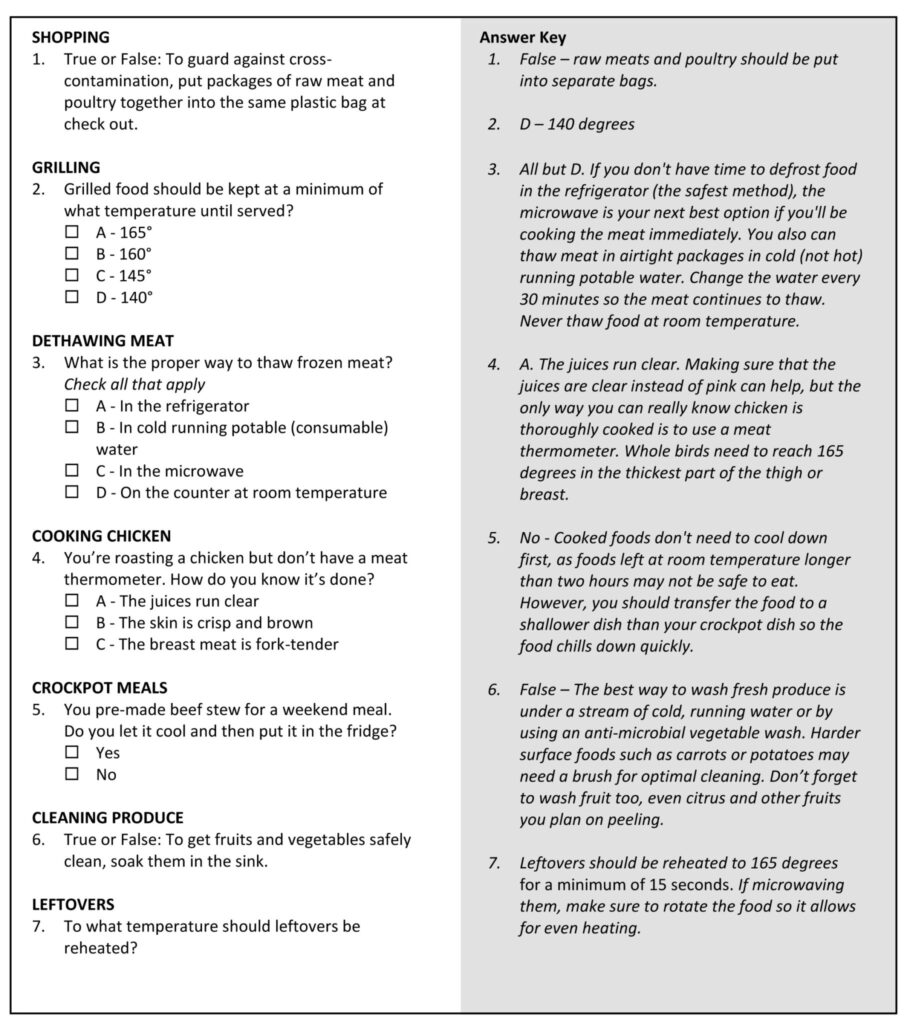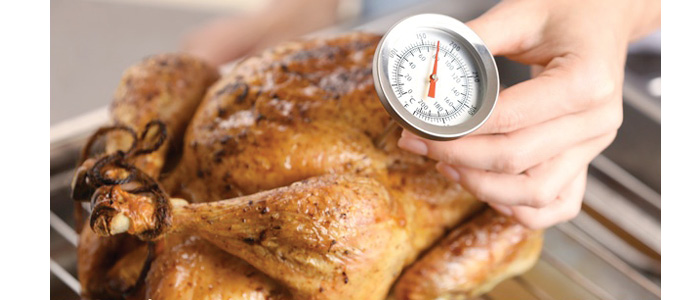Best Practices for in Your Kitchen from Chef Derek
We all know that food safety is important. There are processes and procedures at the farms, packers and processors, restaurants and food stores. But we play a key role ourselves for ensuring the food we prepare is safe to eat. Take this short quiz to see if you know some of the basics.

Did you pass the quiz? If you scored 100%, you’re a food prep pro. Even if you scored low, you just brushed up on your food safety tips by taking this quiz.
To advance your food safety knowledge, Chef Derek from Moravian Manor Communities shares some tips below from the foodservice industry that also apply to food safety in your home.
Chef or Home Cook, The Rules Still Apply
Safe cooking, serving, storing, and rotation of food products are all an integral part of keeping our food safe to eat. As a home chef who prepares many meals for family and friends, you too should follow some hard and true food safety guidelines.
- Pre-washing produce is a must for food safety. Remember, most of these products grow in the ground or are treated with chemicals to preserve freshness. Therefore, they must be washed prior to cutting or using. Salmonella and listeria are just a few foodborne illnesses that can be contracted from dirty or unwashed produce. Don’t worry about re-washing pre-washed greens. Doing this can cause more harm than good because you could introduce bacteria to the greens from your sink and counters.
- Cold foods must be held at 40 degrees or below and hot foods must be held at 140 degrees or above once cooked and awaiting to be served. Most foodborne pathogens grow when the temperature is between 41 degrees – 139 degrees.
- Prevent foodborne illnesses by:
- Proper handwashing
- Cook food thoroughly
- Prevent cross-contamination by using one cutting board for fresh produce and another for raw meat, poultry and seafood.
- Use food thermometers to gauge internal temperatures:
- Fish – 145 degrees
- Whole meats – 145 degrees
- Ground meats – 155 degrees
- Poultry – 165 degrees
- Do not put hot food directly into the freezer. By doing this, you risk increasing the temperature of other foods nearby already frozen, which could lead to bacterial growth. Allow enough time for hot food to cool slightly before placing in the fridge or freezer.
- When pre-seasoning or marinating meats before cooking, put them in a container or sealed bag and place in the refrigerator. Pull it out of the refrigerator when you are ready to cook and dispose of any liquids no used; do not reuse marinades or add uncooked liquids to cooked foods as this can add unwanted bacteria to the food about to be consumed.
- Use airtight storage containers to store leftovers for in the fridge or freezer. Properly sealed containers help keep out bacteria and prevent odors impacting other food in your refrigerator.
- When defrosting meat, the best options are to either defrost meat in the fridge, under cold running potable (consumable)water, or in the microwave. Leaving it on your kitchen counter to defrost at room temperature can take hours and by then a number of bacteria have made the meat unsafe to eat, even after it’s cooked.
We hope you find this helpful for consuming, cooking, and storing foods safely. Bon appétit!

